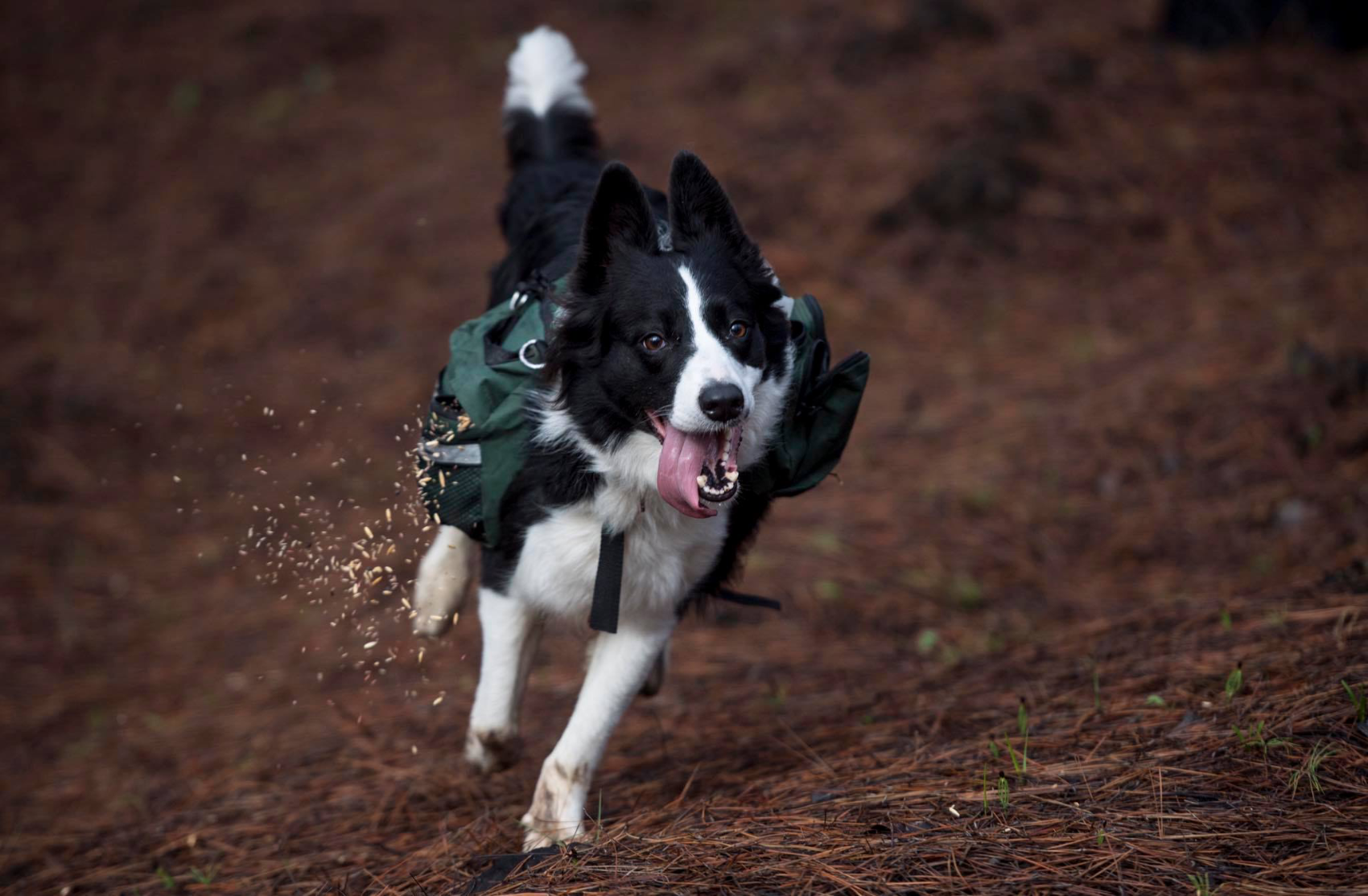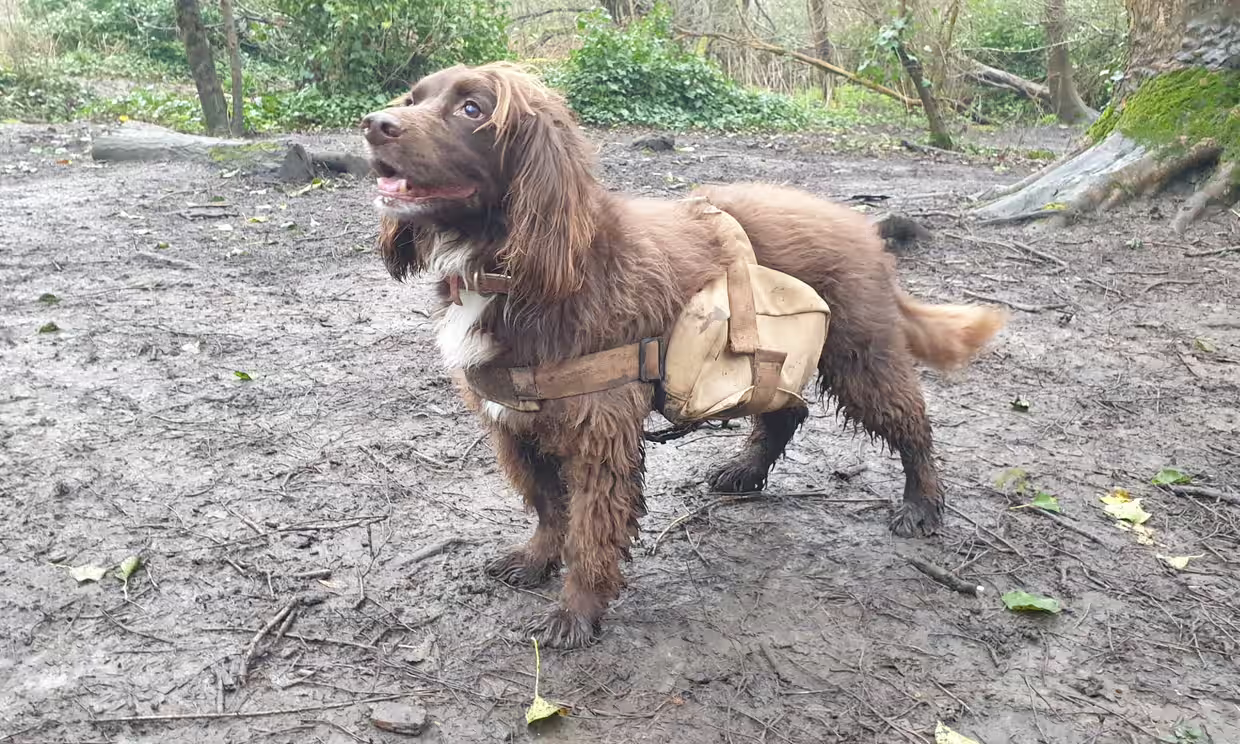Strap A Backpack Full Of Seeds To Your Dog And Start Rewilding Your Ecosystem
To start a rewilding project all you have to do is walk your dog. Dog owners in Chile and the United Kingdom are strapping backpacks full of seeds to their dogs and rewilding natural ecosystems that have been devastated by fire or people.

If you are a dog owner who likes to talk in the woods, with just a small change, you and your dog could have a dramatic impact on the biodiversity of the surrounding natural ecosystem. All you have to do is strap a backpack full of seeds to your dog and take them on lots of walks through the woods so they can disperse some seeds.
Wolves used to handle this work in nature, seed dispersal is critical to the ecological performance of plant species and the communities that they form, and wolves historically provided valuable and effective seed dispersal services. But now dogs have taken over the job and are helping to rewild natural ecosystems.
Before wolves were hunted to extinction, they used to roam vast areas, typically covering 12 miles (20 km) or more each night. As they traveled, they inadvertently picked up wildflowers and grass seeds in their fur, dispersing them over great distances and fostering new plant colonies vital for biodiversity and thriving ecosystems.
The Lewes Rewilding Project
In the English town of Lewes, an innovative rewilding project is underway. It involves local dogs equipped with seed-filled backpacks. This initiative by the Railway Land Wildlife Trust, funded by Ouse Valley Climate Action, aims to mimic the ecological role once played by wolves in the United Kingdom.

A spokesperson for the project explained, “We’re really interested in rewilding processes, but they often involve reintroducing big herbivores like bison or wild horses. In a smaller urban nature reserve, it’s really hard to do those things. So, to replicate the effect that those animals have on the ecosystem, we aimed to utilize the vast number of dog walkers that are visiting the nature reserve daily.”
The Chilean Rewilding Project
Dogs, with their ability to cover more ground than humans and access harder-to-reach areas, are perfect for this task. This is not the first time that dogs have been trained in this role, in Chile, two sisters and their dogs successfully used this method to plant seeds and rewild areas that had been devastated by wildfire.

The sisters use Border Collies to reseed these areas, an ideal breed for this kind of work, because they have to run through miles of, sometimes difficult, forest terrain spreading their seeds, and not get distracted by wildlife while on their mission.
The project in the UK drew inspiration from the Chilean project, but instead of using a dedicated team of Border Collies, they are instead enlisting local dog walkers who collect seed-filled backpacks from staff members.
Mix Sand In With The Seeds
These backpacks have small holes that allow seeds to be gradually deposited as the dogs explore the environment. They mix the seed with sand to help the seeds spread further, and track where the dogs were depositing the seeds.
This method increases the spread and effectiveness of seed germination, and while the project is still in its infancy, it is already seeing early results. While they have begun to see some seed germination, because most of the seeds that they are planting are perennial plants which can sometimes take a year to establish and flower, the real results will become more apparent over the next couple of years.
How To Start Your Own Rewilding Project
It is a wonderful project for any dog-walking group that lives near wooded and overpopulated areas. By walking their dogs through the woods, they can boost the biodiversity of our natural ecosystems. Your dog will be happy to help and probably never needs an excuse to run through the woods.
To successfully mimic these rewilding projects, you should only use native wildflower seeds that are well-suited to your specific region's climate and soil conditions. If you are unsure about which kinds of seeds you should be using, contact your local wildlife agency and ask them. You should always talk to your local wildlife agencies, local conservation groups, or local botanists before you begin to let them know what you are doing.
It's crucial to avoid non-native or invasive species that can disrupt local ecosystems. In the US, species might include black-eyed Susan (Rudbeckia hirta), purple coneflower (Echinacea purpurea), and butterfly weed (Asclepias tuberosa) are excellent choices, depending on the region, as they support local biodiversity and provide habitat and food for native insects and pollinators. In the UK, species such as oxeye daisy (Leucanthemum vulgare), red campion (Silene dioica), and bird’s-foot trefoil (Lotus corniculatus) can perform the same role in the ecosystem.
Local dog walkers can replicate this project by following a few simple steps.
First, source seed packs from a reputable supplier who specializes in native plants. Mix the seeds with sand to help distribute them evenly. Secure the seed mix in small pouches or backpacks designed for dogs. You will need to make holes in them so that as you take your dog for walks in parks, nature reserves, or green spaces, the seeds will naturally disperse through the holes in the pouches.
With the right kind of seeds, you and your dog can play an important role in enriching local biodiversity and supporting your natural ecosystem health.
Encourage other dog owners in your community to join in to create a larger impact. Sharing the progress on social media is a great way to raise awareness and inspire others to participate. Additionally, coordinate with local environmental organizations to track the project's success and make adjustments as needed, finally, if this article has inspired you to start a project like this, let us know!


